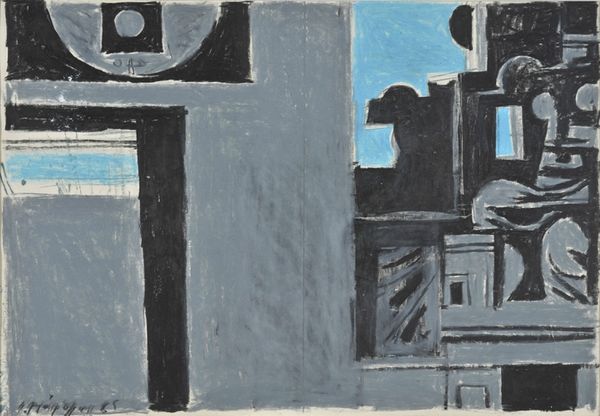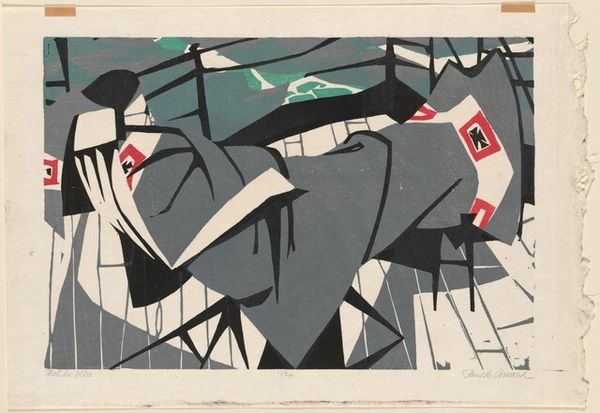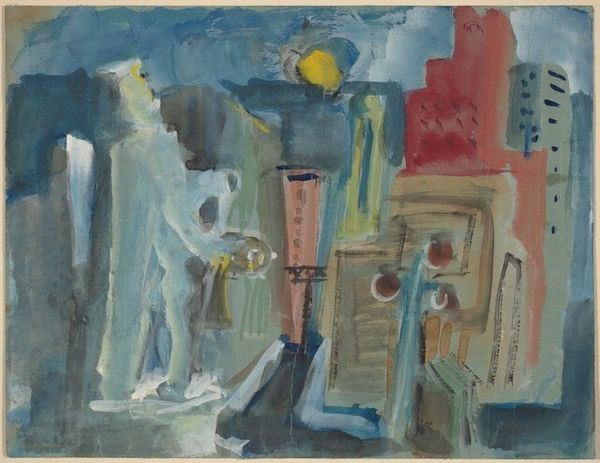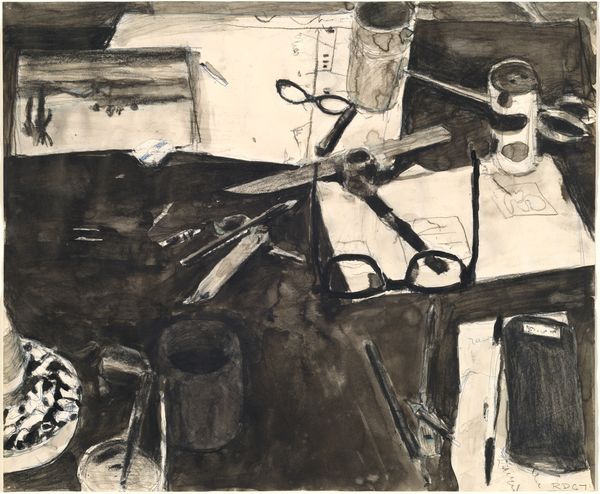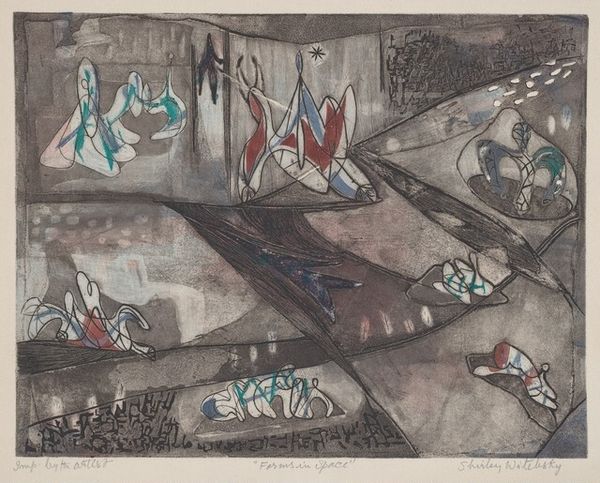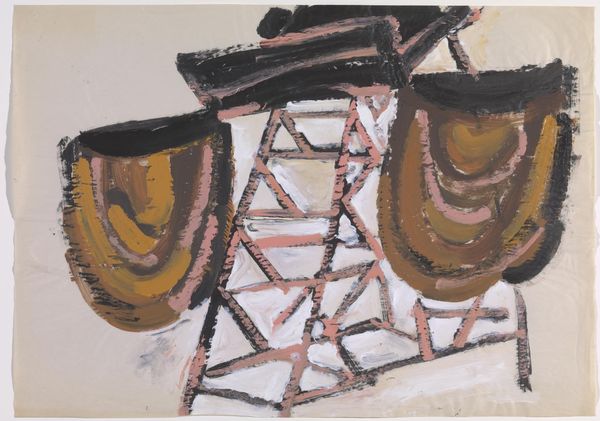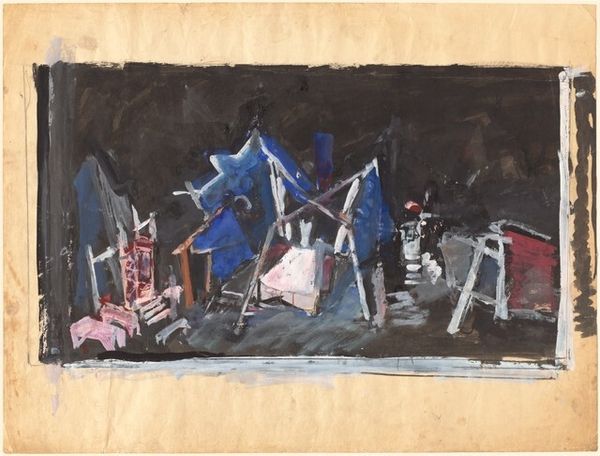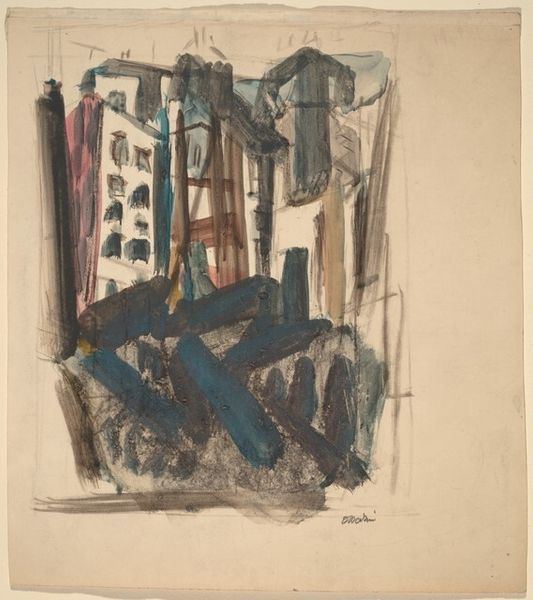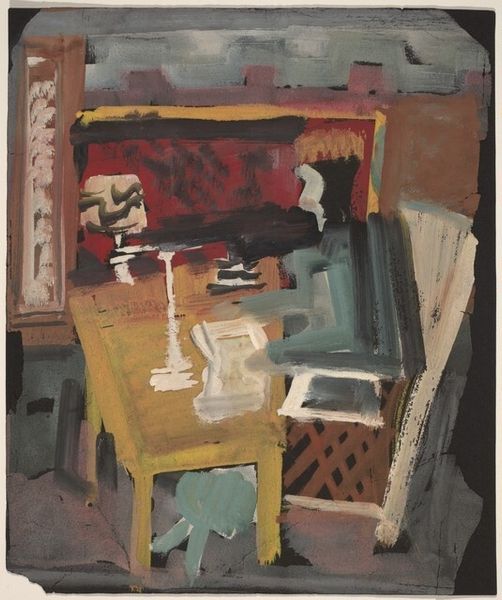
# print
#
landscape
#
naive art
#
cityscape
#
watercolor
#
realism
Dimensions: image: 409 x 505 mm sheet: 435 x 560 mm
Copyright: National Gallery of Art: CC0 1.0
Editor: So, here we have John Lonergan's "Fisherman's Wharf," a print from 1942. It’s striking how muted the colors are, almost like looking at a faded photograph. What do you see in this piece, considering the time it was made? Curator: Given its creation in 1942, I see an interesting portrayal of American labor during a tumultuous time. World War II was in full swing. The composition, with its emphasis on work-related objects—the ropes, the fishing net, the figure seemingly heading out for a day’s work—suggests a quiet focus on the everyday routines and labors continuing back home. How does the absence of bright, celebratory colors affect your perception of this "everyday"? Editor: It definitely gives it a sense of solemnity. I was initially drawn to its calm, subdued tones, but now thinking about it, the lack of vibrancy feels like it reflects the anxieties of wartime, a sense of the weight of the world. Were images like these ever intended to encourage that workforce spirit, to get everyone on board? Curator: Possibly. But that gets into thinking about what messages might circulate when national identity is heightened during wartime. Do you get a sense of a commissioned work versus artistic representation in its social role? Editor: Well, there's something almost unsettling about how the human figures are partially hidden and almost seem secondary. Like labor in wartime wasn’t something to shout from the rooftops about in art, maybe? It makes it seem honest. It gets at this deeper need of these figures represented within a period, a landscape. It’s also really interesting to me how, thinking back to the idea of landscape and realism, there are ways it’s clearly stylized. I think you’re right to emphasize how crucial its historical placement really is. Curator: Absolutely. This work demonstrates that public-facing art holds numerous values depending on perspective, from propagandistic intention, labor promotion, or even authentic expression from the figure in question. This work becomes more multifaceted when it has a clearer view of historical positioning.
Comments
No comments
Be the first to comment and join the conversation on the ultimate creative platform.



